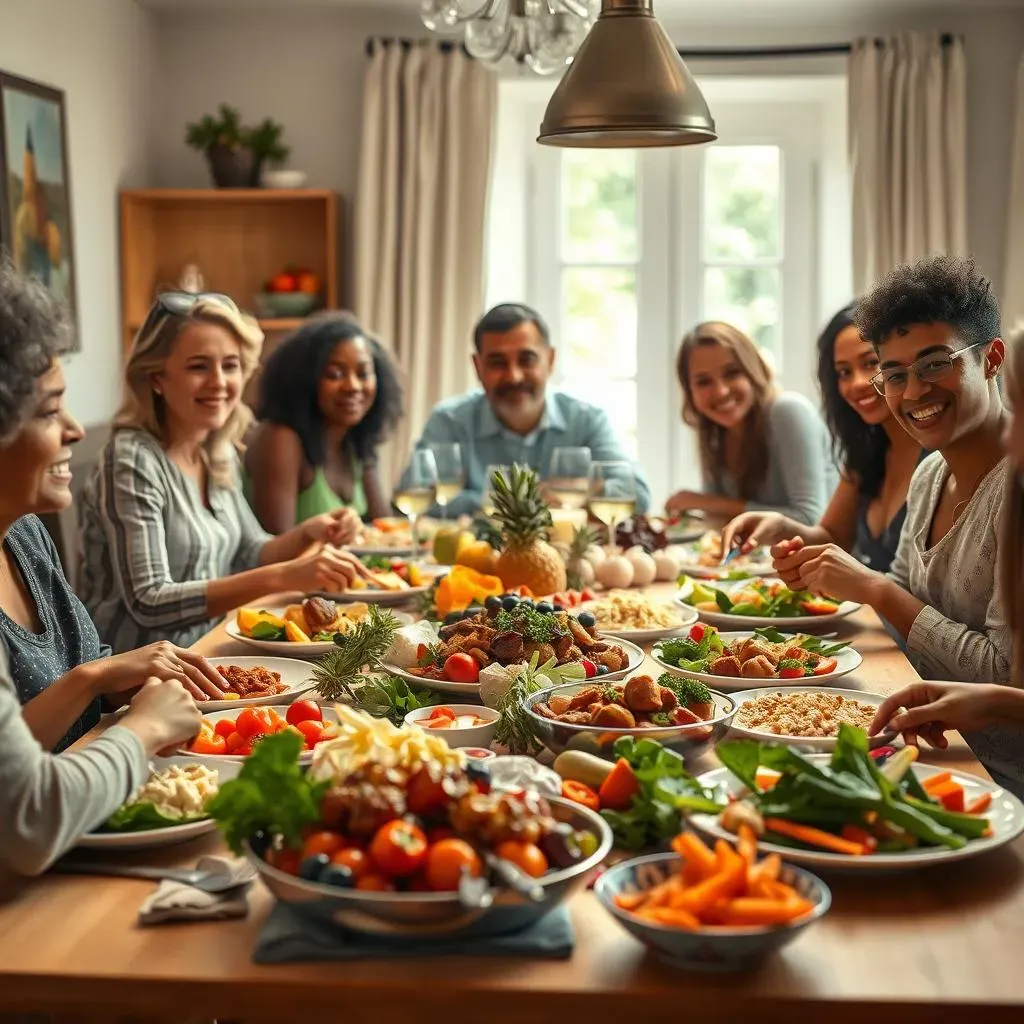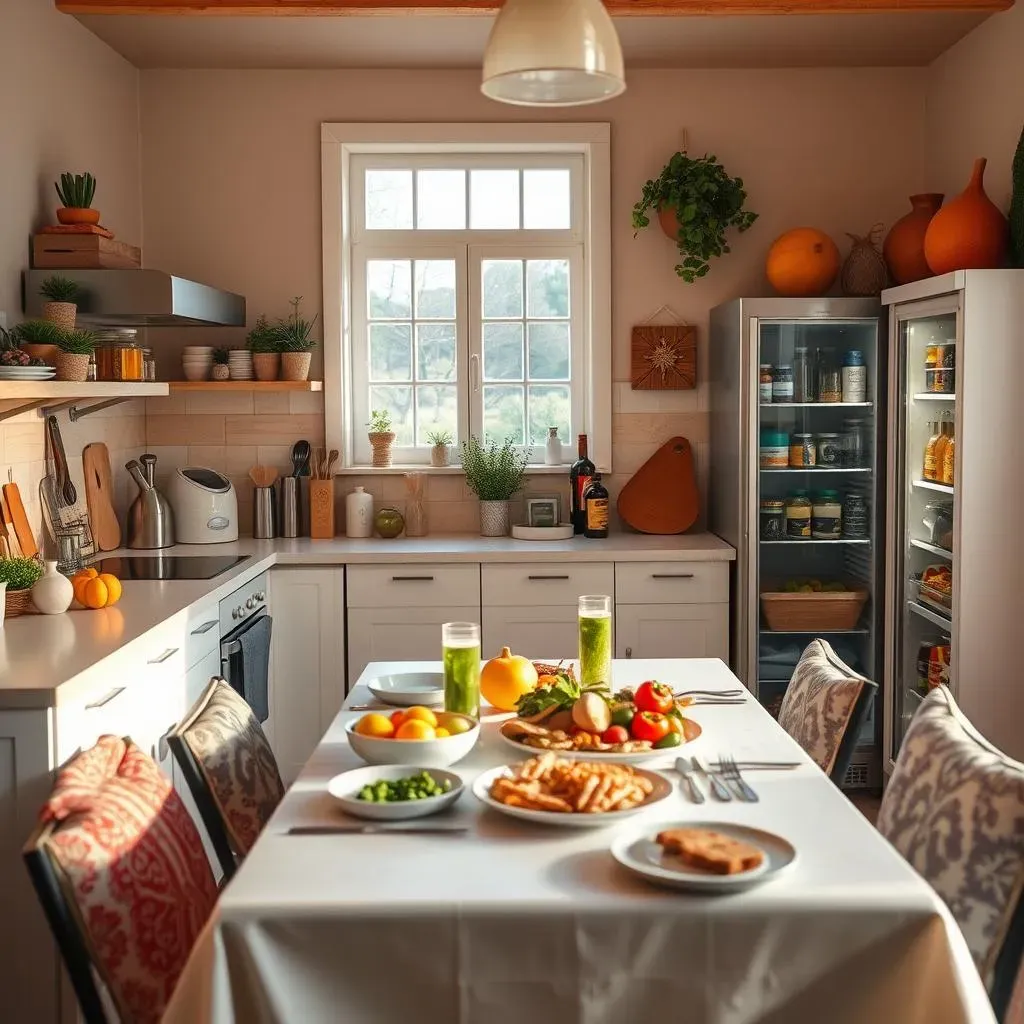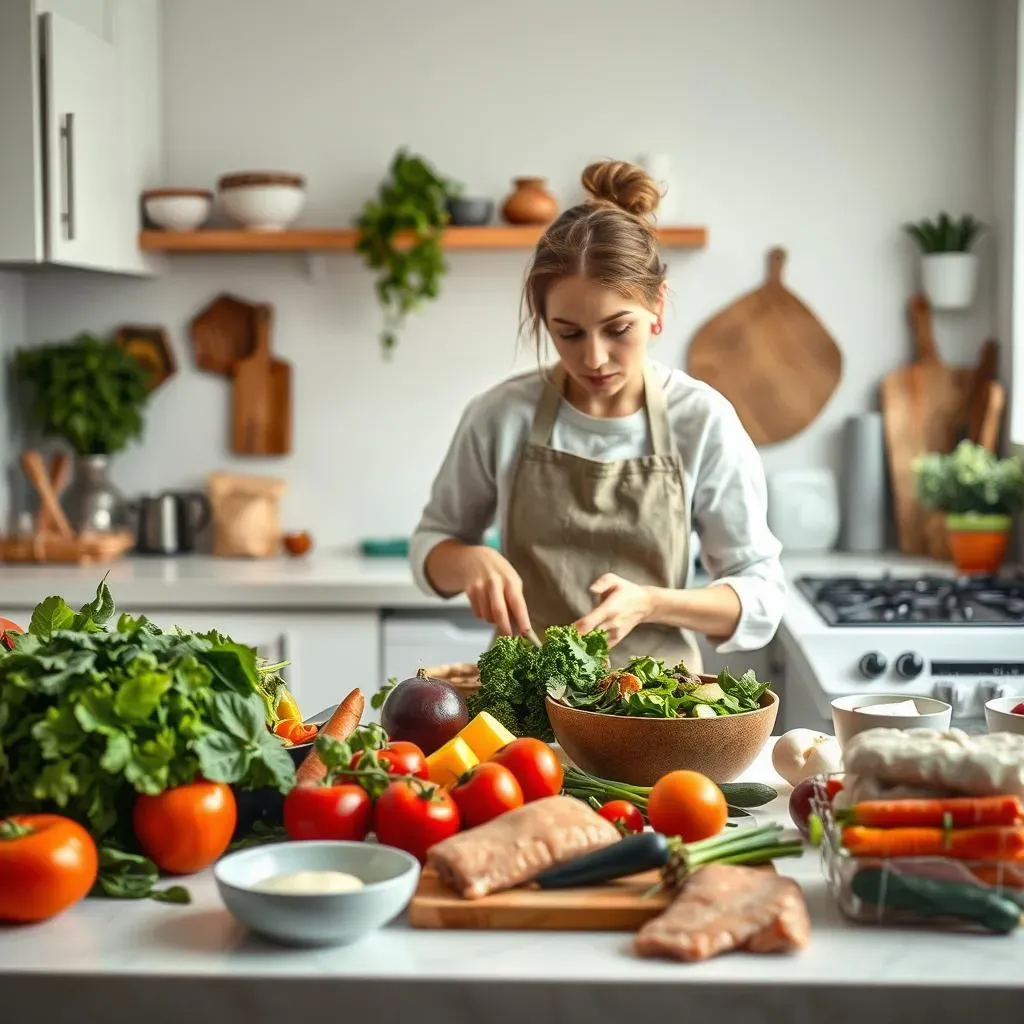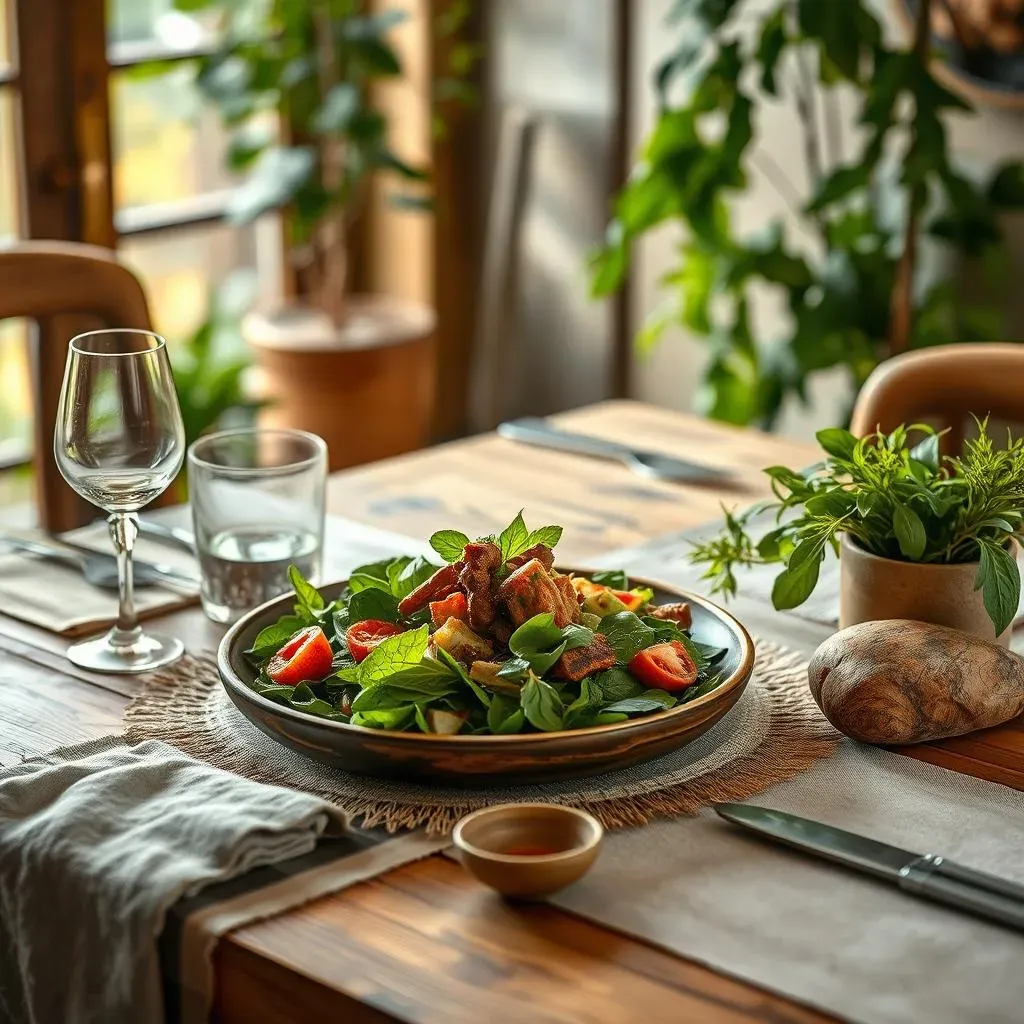Table of Contents
Ever stared into your fridge, wondering what a truly healthy dinner looks like? It’s a common struggle, and I get it. We’re bombarded with so much information about what we should and shouldn’t eat, it’s easy to feel lost. This article is going to break it down, not with strict rules, but with simple, practical advice. We'll explore what a balanced meal actually means, focusing on how to make dinner both nutritious and enjoyable. Forget the complicated diets; we're talking about real food, real life, and real satisfaction. We will cover everything from quick meal planning tips to how to make smart choices when eating out. We will also explore a balance of proteins, vegetables, fruits, and grains. By the end, you'll have a clearer picture of what a healthy dinner looks like for you and your family, understanding that it's about much more than just calories. So, let’s dive in and find out "what should a healthy dinner look like", together!
Guidelines for a Healthy Dinner

Guidelines for a Healthy Dinner
so let's talk about what a healthy dinner actually looks like. It's not about being super strict or only eating salads, I promise! Think of it as building a balanced plate, like a food puzzle. You want a mix of things that taste good and are good for you. I aim for at least three different kinds of food on my plate. That usually means some protein to keep you full, some veggies for all those good vitamins, and maybe some fruit or grains for extra energy. It's like making sure you've got all the colors of the rainbow on your plate, and it doesn’t have to be complicated. The key here is variety and balance.
Now, while variety is awesome, there are some things we should try to keep to a minimum. We all love a sweet treat or some salty snacks now and then, and that's totally okay. But, when we’re aiming for a healthy dinner, it’s best not to make them the main event. Think of desserts, salty foods, and sugary drinks as occasional guests, not everyday staples. Processed foods? They’re convenient, sure, but they often lack the good stuff that our bodies crave. So, while it’s okay to have them from time to time, it’s better to lean towards more whole, natural foods most of the time. Listen to your body too, stop eating when you feel satisfied, not stuffed. It's not a race; it's about fueling yourself well.
Food Group | Examples | Why it's Good |
|---|---|---|
Proteins | Chicken, fish, beans, lentils, eggs | Keeps you full, builds muscles |
Vegetables | Broccoli, carrots, spinach, bell peppers | Full of vitamins, fiber |
Fruits | Apples, bananas, berries, oranges | Natural sugars, vitamins |
Grains | Brown rice, quinoa, whole-wheat bread | Energy, fiber |
Planning and Preparation for Your Dinner

Planning and Preparation for Your Dinner
The Power of Planning
so you know what a healthy dinner should look like, but how do you actually make it happen? This is where planning comes in, and no, it doesn't have to be complicated. Even if it’s just a quick meal, having a rough idea of what you're going to eat can make a big difference. Think of it like packing for a trip; if you just throw random things into a bag, you might end up with a bunch of stuff you don’t need or missing something important. Dinner is the same way. Having some healthy and tasty food options on hand is key to not falling back on less nutritious choices when you’re tired or hungry.
It’s not about having every meal planned out for the week, unless that’s your jam. It’s about being a little bit strategic. For me, that often means a quick look in the fridge and pantry before I go shopping, just to see what I already have. That way, I am not buying the same stuff I already have. Having a few go-to recipes that you enjoy and that are quick to make can be a lifesaver. Think of it like having a trusty toolbox with your favorite tools – you know they’ll get the job done.
Prep Like a Pro
Prep work doesn’t mean spending hours in the kitchen every day, not at all. It can be as simple as washing and chopping some veggies when you get back from the store, or cooking a big batch of something on the weekend and freezing leftovers. I love making a big pot of lentil soup or a batch of roasted vegetables that I can use in different meals during the week. It's like giving future-you a little gift of healthy food that's ready to go when you need it. It also makes those busy weeknights feel way less stressful, knowing that a good meal is just a few steps away.
Also, don't underestimate the power of leftovers. They're not just for lunch the next day; they can be the start of a whole new meal. Leftover chicken can become a salad, roasted veggies can go into an omelet, and rice can be the base for a stir-fry. It's about being resourceful and making the most of what you have. It's like being a food detective, finding ways to reuse and repurpose things in fun and creative ways.
Prep Task | Why it Helps | Example |
|---|---|---|
Wash & Chop Veggies | Ready to use, saves time | Cut up carrots, celery, and peppers after shopping. |
Cook Extra Grains | Easy to add to meals | Make a big batch of rice or quinoa. |
Batch Cook Proteins | Quick meal additions | Roast a whole chicken or bake a bunch of tofu. |
Freeze Leftovers | Easy meals on busy days | Freeze individual portions of soup or chili. |
Eating Out vs. Eating In For a Healthy Dinner

Eating Out vs. Eating In For a Healthy Dinner
The Home-Cook Advantage
so let’s talk about eating out versus eating in, especially when you’re trying to keep things healthy. Look, I love a good restaurant meal as much as the next person, but let’s be real: when you cook at home, you’re the boss. You decide what goes into your food, and you can control how much oil, salt, and sugar you use. It’s like having your own personal food laboratory, where you can experiment with flavors and ingredients to your heart’s content. Plus, there's something really satisfying about making a meal from scratch, knowing exactly where each ingredient came from and how it was prepared. I find that when I cook at home, I'm more mindful about what I'm eating and how much I'm putting on my plate.
Cooking at home also means you can tailor your meals to your specific needs and preferences. If you’re trying to eat more veggies, you can load them up. If you're watching your portion sizes, you can easily control that too. It’s a way to have more control over your health and well-being, without feeling like you're missing out. For me, it's not just about the food, it's about the process of creating something nourishing for myself and my family.
Navigating the Restaurant Scene
Now, I’m not saying you should never eat out. That would be cruel! But, it’s important to be smart about it. When you’re at a restaurant, you’re not always in control of what’s in your food. Portion sizes can be huge, and there might be extra butter, salt, and sugar that you didn't ask for. However, you can make better choices. I always try to look for dishes that are loaded with veggies, or that have lean proteins. I also ask for dressings and sauces on the side, so I can control how much I'm using. It’s like being a food detective, trying to find the healthiest options on the menu.
Another trick I use is to share a meal with someone, or order an appetizer and a side salad instead of a huge main course. This helps with the portion control and also gives you a chance to try different things. I also try to drink water or unsweetened beverages instead of sugary drinks, which can add a lot of unnecessary calories. Eating out doesn’t have to be a total health disaster; it’s about making mindful choices and being aware of what you’re putting in your body.
Eating Scenario | Pros | Cons | Tips |
|---|---|---|---|
Eating In | Control over ingredients, portion sizes, cost-effective | Requires time and planning | Plan meals, prep ingredients in advance |
Eating Out | Convenient, enjoyable experience | Less control over ingredients, portion sizes, can be expensive | Choose healthier options, ask for sauces on the side, share meals |
Finding the Balance
Ultimately, it’s about finding a balance that works for you. You don’t have to be perfect, and you don't have to choose one over the other all the time. Some days, cooking at home is the best option, and other days, it’s nice to go out and enjoy a meal someone else has prepared. The key is to be aware of the choices you’re making and to try to make the best decisions for your health and well-being. It’s like being a food explorer, trying new things and finding what works for you.
I see eating as a way to nourish my body and soul, whether I’m cooking at home or enjoying a meal out with friends. It’s not about deprivation or restriction; it’s about making choices that make me feel good both inside and out. So, whether you’re a kitchen wizard or a restaurant regular, the goal is to approach food with mindfulness and enjoyment. And to remember that the best meal is the one that makes you feel happy and healthy.
Making Healthy Dinner Choices

Making Healthy Dinner Choices
Mindful Eating
so we’ve talked about what a healthy dinner should look like and how to plan for it. But let’s get real about the actual act of eating. It’s not just about what’s on your plate, but how you approach your meal. Mindful eating is about being present and paying attention to your food, and I know it sounds a bit "woo-woo" but it really makes a difference. It's like going on a mini-adventure with each bite; noticing the smells, the tastes, and the textures. It's about slowing down, savoring each mouthful, and really connecting with what you're eating. It’s not about rushing through your meal while you’re watching TV or scrolling through your phone. It's about giving your food the attention it deserves and allowing your body to tell you when it's had enough. I find that when I eat mindfully, I actually enjoy my meals more and I’m more likely to make healthier choices.
When you're eating mindfully, you're also more likely to notice your body's hunger and fullness cues. It's like having an internal GPS that guides you to know when to start eating and when to stop. It’s about eating when you're hungry, not just because it’s mealtime, and stopping when you’re satisfied, not stuffed. I’ve been guilty of eating until I feel like I need a nap, but that’s not a good feeling. It’s about tuning into your body's signals and respecting what it’s telling you. It’s a skill that takes practice, but it’s totally worth it. It's like learning a new language, the more you practice the better you get at understanding what your body is saying.
Flexibility is Key
Now, with all this talk about healthy choices, I want to make one thing crystal clear: perfection is not the goal. Life happens, and sometimes your dinner might not be the most nutritious meal ever, and that’s okay. It’s about making healthy choices most of the time, not all of the time. It’s like being a tightrope walker, you might wobble a bit, but you still keep moving forward. I believe that food should be enjoyable, it shouldn’t be a source of stress. If you’re craving some pizza or a burger, enjoy it! Just be mindful about it and try not to make it an everyday thing. It's about finding a balance that works for you and your lifestyle. I know that sometimes, I just want a bowl of pasta, and I'm going to enjoy that bowl of pasta without feeling guilty about it.
The best advice I can give you about healthy dinner choices is to be kind to yourself and to listen to your body. It’s not about deprivation or restriction; it’s about nourishing yourself with foods that make you feel good, both physically and mentally. It’s about finding what works for you and creating a sustainable eating pattern that you can stick with long-term. Remember that the journey to healthy eating is a marathon, not a sprint. There will be ups and downs, but the important thing is to keep moving forward and to keep learning and growing. It's like being an artist, you're always trying to improve your craft, and you're always learning new techniques.
Mindful Eating Tip | How It Helps |
|---|---|
Eat Slowly | Allows you to savor your food and notice fullness cues |
Minimize Distractions | Helps you focus on your meal and not overeat |
Listen to Your Body | Eat when hungry, stop when satisfied |
Be Kind to Yourself | Don't aim for perfection, allow for flexibility |
Wrapping Up Your Healthy Dinner Journey
Figuring out what a healthy dinner should look like doesn't have to be a chore. It's about balance, making smart choices, and most importantly, enjoying your food. Remember, it's not about perfection, but about progress. By focusing on variety, planning ahead, and listening to your body, you can create dinners that nourish you and your family. Whether you're cooking at home or eating out, these tips can guide you toward meals that are both healthy and satisfying. The key is to be mindful, flexible, and to keep making those small, positive changes. You got this!